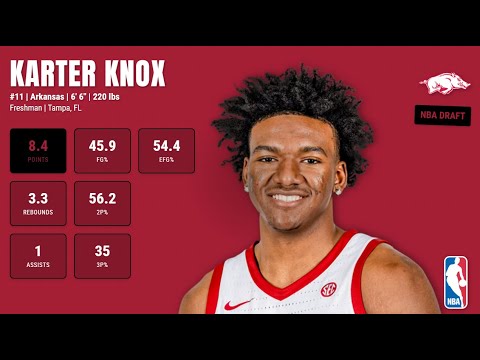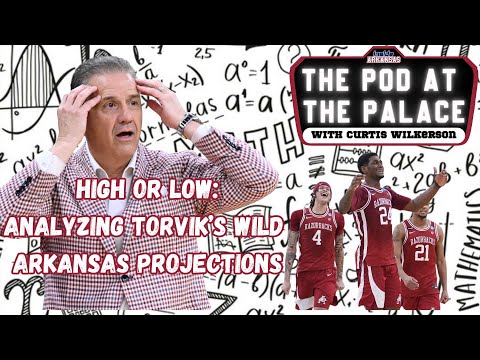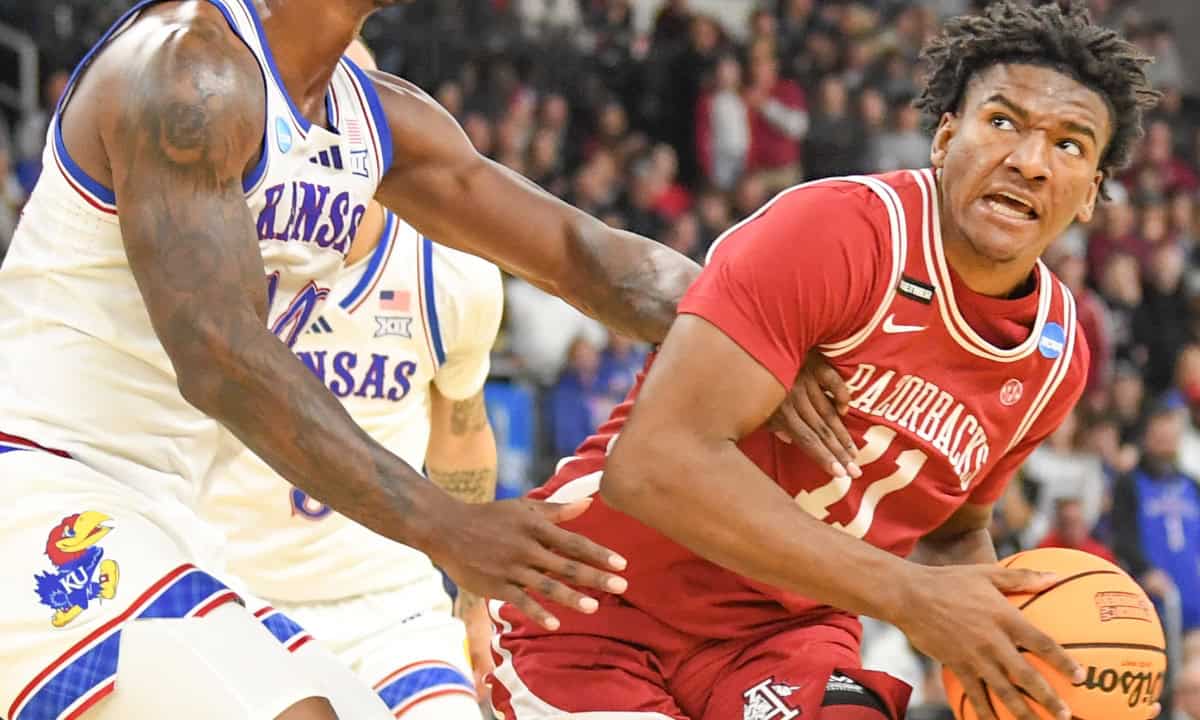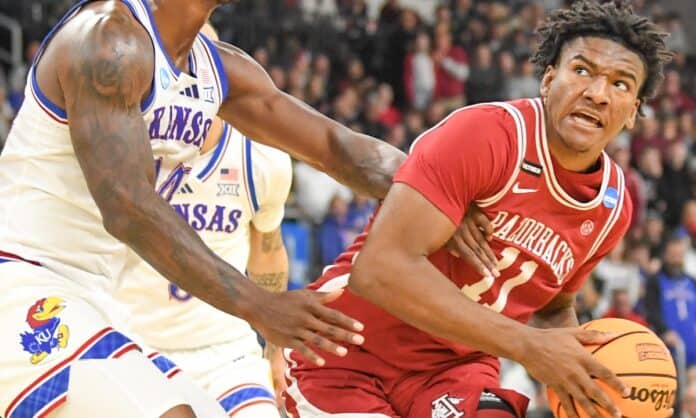I need to get something off my chest about Karter Knox: He is the most influential player heading into Year 2 of the John Calipari era at Arkansas.
Knox withdrew from the NBA Draft and opted to return to Fayetteville. Good. Smart. Absolutely the right call. But more importantly for us pious pig-snouted partisans, it means we get to watch one of the most intriguing development projects in college basketball unfold right in front of our eyes.
And before you roll your eyes at me calling Knox a “project,” let me clarify. I’m not talking about some raw athlete who needs to learn the game. I’m referring to a player who has already demonstrated legitimate flashes of brilliance and is now poised to transform those flashes into sustained excellence under a coach who has perfected the art of player development.
Let’s discuss how Calipari optimizes Knox, shall we?
Karter Knox: Flashes of Brilliance
First things first: Knox can flat-out play basketball. I know that’s not necessarily breaking news, but it should not be ignored what this kid did down the stretch last season.
From Feb. 15 until Texas Tech eliminated Arkansas in the Sweet 16, Knox averaged 13 points while shooting 56 percent from the field, 42 percent from three-point range and 80 percent from the free throw line. Those aren’t “developmental prospect” numbers – those are “legitimate college basketball star” numbers.
That 20-point, 6-rebound performance against Texas Tech in the Sweet 16? That was Knox operating close to his ceiling, and it was beautiful to watch. He scored in double figures in nine of the final 12 games of the season. That’s not a hot streak, that’s a player figuring out who he is.
At the combine, Knox measured at 6-foot-5 without shoes (he’s listed at 6-6 on the official Arkansas basketball roster), 212 pounds, with a 6-foot-10.25 wingspan, 8-foot-6.5 standing reach and a 39.5-inch max vertical. Those measurables don’t just suggest potential, they scream it from the rafters of Bud Walton Arena.
Calipari’s Development Machine Helps Arkansas
One thing Calipari does better than any coach in college basketball is identify what a player does naturally well and then build an entire offensive system around maximizing those strengths.
Scouts from his high school recruiting days described Knox as “a lengthy and explosive wing” who “is a straight-line driver off the bounce” and “gets into the paint and violently attacks the rim, playing way above it.” You know what that sounds like to me? A perfect fit for the dribble-drive offense.
Calipari’s system isn’t about turning players into something they’re not. It’s about turning them into the best possible version of what they already are and using the dribble-drive offense as a blank canvas for players to paint.
Knox is already elite at attacking the rim. Calipari’s going to give him a thousand more opportunities to do exactly that. He also showed legitimate 3-point shooting improvement last season. Calipari is going to ensure he gets clean looks from deep while continuing to develop his stroke.
But here’s the hall-of-fame level genius of what Cal does: he doesn’t just develop individual skills in isolation. He develops players within the context of winning basketball. Knox isn’t just going to become a better shooter, he’s going to become a better shooter who understands how to use that shooting to create advantages for his teammates.
I keep seeing people mention that Knox needs to develop his perimeter shot, and I want to gently suggest that maybe some of you weren’t paying attention to what happened over the final month and a half of last season.
Shooting 42 percent from three over 12 games isn’t a fluke. That’s a player who identified a weakness, worked to address it, and saw real improvement. Now, imagine what happens when he gets another full offseason of work with Calipari and the coaching staff, plus the benefit of understanding exactly how he fits into the offensive system thanks to already having one season under his belt.
For Knox, that means more than just becoming a better catch-and-shoot player. It also means developing the shooting versatility that makes him impossible to guard. Off-the-dribble threes. Contested pull-ups. Corner threes off ball movement. The whole package. The lottery package.
If his late-season surge was Knox operating at 70 percent of his potential, what happens when Cal gets him to 90 percent? What happens when the three-point shot becomes genuinely reliable across the course of an entire season? What happens when he improves his ball handling and adds another 10 pounds of muscle to an already stout presence?
Fort Knox indeed:
Three Sets Arkansas Should Run More to Unlock Karter Knox’s Potential
“Peja action“
Let’s start with two things Calipari and the Razorbacks coaching staff could call to get Knox more clean looks from above the break. We’ll start with an action named after everyone my age’s favorite sharp-shooting Sacramento King.
In Peja action, clearly named for Peja Stojakovic, a shooter sets a back screen and then curls around a dribble hand-off (DHO) for a quick open look. The DHO usually occurs around the elbow, which is part of why this set would work wonders for Knox..
Already a subscriber? Log in here
Keep reading this article for free.
Sign up for a free account to continue reading and get access to the BoAS’ newsletter.
The free account you create gives access to more of BoAS’ stories delivered to your inbox. Unsubscribe any time.
***


***
Check out Max Hoover’s in-depth breakdown of Malique Ewin here:
***
More coverage of Arkansas basketball and Karter Knox from BoAS…

